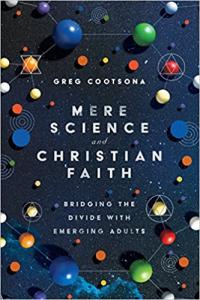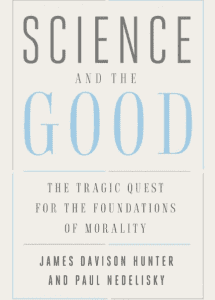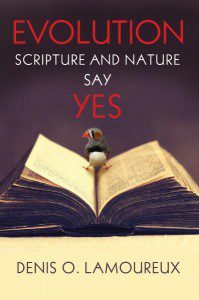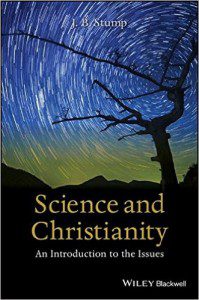 We are taking a look at the book Does God Make a Difference? Taking Religion Seriously in Our Schools and Universities by Warren Nord. Nord’s hypothesis is that a liberal education – as in liberal arts not liberal politics – needs to take religion seriously because religion forms an important element of human existence. Before considering his suggestions we need to understand what is meant by a liberal education. From Wikipedia:
We are taking a look at the book Does God Make a Difference? Taking Religion Seriously in Our Schools and Universities by Warren Nord. Nord’s hypothesis is that a liberal education – as in liberal arts not liberal politics – needs to take religion seriously because religion forms an important element of human existence. Before considering his suggestions we need to understand what is meant by a liberal education. From Wikipedia:
The liberal arts (Latin: artes liberales) are those subjects or skills that in classical antiquity were considered essential for a free person (a citizen) to know in order to take an active part in civic life.
…
In modern times, liberal arts education is a term that can be interpreted in different ways. It can refer to certain areas of literature, languages, philosophy, history, mathematics, psychology, and science. … the term generally refers to matters not relating to the professional, vocational, or technical curricula.
Secondary school education (grades 9-12) is a liberal education. Students are expected to get the basics in a wide range of subjects, not technical training for a vocation. We believe that a functional democratic society requires a liberally educated citizenry. Much, but not all, undergraduate education is likewise an intentionally liberal education with a degree of specialization, but also a required breadth of experience.
Nord lays out some of his vision for the role of religion in a liberal education by considering several specific disciplines. Being a scientist I turned first to his chapter 11 Religion and Science Courses. This title is a bit ambiguous, but Nord is not referring to courses in religion and science but to the place for religion in science courses. This is, needless to say, rather controversial.
A summary of Nord’s main point. The primary purpose of science courses is to teach students the current consensus view of the discipline. There is no place for alternatives unless there is a real controversy among practitioners of the discipline. He sees no reason to teach creationism or even ID as alternatives to evolutionary biology. But teaching students the current consensus shouldn’t be the sole purpose of science courses in a liberal education.
No doubt the primary purpose of science courses is to teach students good science as scientists understand it, but it can’t simply be to train scientists. Science education must serve the purposes of a liberal education. High school and introductory undergraduate science courses must situate students in our ongoing scholarly and cultural conversations about how to make sense of nature and the world. (p. 242)
We typically teach science as one more disciplinary monologue that students must listen to uncritically. In fact, because science texts don’t take seriously contending interpretations of nature, students typically come to accept the claims of science as a matter of faith in the scientific tradition rather than of critical reason. (p. 243)
Do you think Nord is right here?
Should science courses situate students in ongoing cultural conversations?
There is a certain amount of “faith” – trust in authorities and the collective growth of wisdom – in any field, but this faith should be accompanied by an openness to criticism. According to Nord, methodological naturalism is the foundation of science and thus this to must be made explicit and allowed to be open to question. If methodological naturalism is not open to question we don’t have reasonable belief, but an “uncritical trust or faith.” Students should be asking questions such as “Why do we believe that methodological naturalism provides an adequate approach to understanding the natural world?”
I think Nord has a point here. The vast majority of students, and even practicing scientists, have never thought much about what science is or what the underlying assumptions of science are. For that matter, most students seem to view science as a set of facts and methods to be learned, not a unifying approach to understanding the natural world. This uncritical acceptance is something of a problem.
[P]ublic schools and universities should not be in the business of nurturing uncritical faith, whether it is in religion, politics, economics, or science. A liberal education should encourage critical thinking, and this can only be done when we are willing to lay bare and question our fundamental assumptions. Certainly one of the most important of these assumptions is the adequacy of the scientific method. What are its limitations? When might it need revision? In what contexts might the use of scientific method be a mistake? (p. 245)
Some Examples. Because evolution is such a big issue in the US, Nord spends a number of pages discussing the ways in which his proposals might play out in the teaching of biology.
1. Discussion of evolutionary biology should include a brief discussion of the history of ideas concerning origins, this would include naturalism, various theistic or deistic approaches, and a spiritual understanding of nature in some non-theistic religions. This will help frame the questions and the ways in which they are addressed.
2. Biology texts should teach biology and evolution as the vast majority of biologists understand it.
3. Alternative viewpoints should be presented in historical and cultural context.
If students are to make informed and reasoned judgements, they must have some sense of where alternative theories acquire their authority, of what traditions they are a part, and how controversial they are within those traditions and within our culture more generally. Students must understand that the vast majority of scientists accept neo-Darwinism (although they may disagree about the religious implications). (p. 252)
4. A discussion of various views must be written fairly and accurately – not as a weapon to bludgeon those who take different views.
5. Because this is a complex subject it cannot be left to teachers to develop their own resources. It may be useful to have a short resource book or supplement rather than expect every textbook to develop a good discussion of the issues.
6. The discussion of design has a place here, not as an alternative to evolution but as part of the ongoing cultural conversation. Nord quotes Michael Ruse:
The Darwinian Michael Ruse ends an article on design theories by leaving his reader “with the reflection that the argument from design has a long and (I would say) honorable history, and that this history seems to be unfinished.” (p. 254)
Nord concludes the chapter with a brief discussion of cosmology and consciousness and examples of two other areas of science where religion should play a role. Again the issue is to present the very best conclusions of modern science and the reason for them, but to also place the discussion in the appropriate historical and cultural context. The big bang is an interesting example, because this is a place where the prejudice against creation originally led to skepticism. Now the big bang need not be interpreted as pointing to a creator, but it shouldn’t have been questioned because it might point to a creator.
Consciousness is a big issue where the science is sufficiently uncertain that care should be taken in firm pronouncements. The reduction of mind to nothing but spontaneous chemical signals in the brain is claimed by some – especially those who start with an assumption of ontological naturalism and atheism. Nord suggests that “the agenda of modern neuroscience may prove more threatening to religion than that of neo-Darwinian evolution.” (p. 260) Again, this discussion should be placed in the appropriate historical, philosophical, theological, and cultural context. A liberal education demands no less.
A provocative (and infamous) quote to make us think. In the section of this chapter where he discusses intelligent design, Nord provides a rather famous quote by Richard Lewontin. This quote comes from Lewontin’s review of Carl Sagan’s The Demon Haunted World, published Jan. 9, 1997 in the New York Review of Books. This quote is used as an illustration of the way that a philosophical commitment to naturalism prevents a truly open-minded consideration of possible explanations.
We take the side of science in spite of the patent absurdity of some of its constructs, in spite of its failure to fulfill many of its extravagant promises of health and life, in spite of the tolerance of the scientific community for unsubstantiated just-so stories, because we have a prior commitment, a commitment to materialism. It is not that the methods and institutions of science somehow compel us to accept a material explanation of the phenomenal world, but, on the contrary, that we are forced by our a priori adherence to material causes to create an apparatus of investigation and a set of concepts that produce material explanations, no matter how counter-intuitive, no matter how mystifying to the uninitiated. Moreover, that materialism is absolute, for we cannot allow a Divine Foot in the door.
Unfortunately this quote is taken out of context by Nord, and, for that matter, by almost everyone who uses it. The context makes it less incendiary and also makes an important point – one that will actually support Nord’s purpose in advocating a liberal education, rather than a merely technical one. The paragraph just above the famous one reads:
With great perception, Sagan sees that there is an impediment to the popular credibility of scientific claims about the world, an impediment that is almost invisible to most scientists. Many of the most fundamental claims of science are against common sense and seem absurd on their face. … What seems absurd depends on one’s prejudice. Carl Sagan accepts, as I do, the duality of light, which is at the same time wave and particle, but he thinks that the consubstantiality of Father, Son, and Holy Ghost puts the mystery of the Holy Trinity “in deep trouble.” Two’s company, but three’s a crowd.
Our willingness to accept scientific claims that are against common sense is the key to an understanding of the real struggle between science and the supernatural. We take the side of science …
I, like Sagan and Lewontin, accept the duality of light (not to mention the duality of the electron) as at the same time wave and particle. This actually makes the doctrine of the Trinity less of a stretch, less absurd – I don’t expect things that are outside of the realm of common experience to agree with my common sense. But the famous quote was not a call to an unfailing faith in naturalism, rather it was an acknowledgement that there is an element of faith.
Lewontin goes on to reflect on complexity of science and how “in the end we must trust the experts and they, in turn, exploit their authority as experts and their rhetorical skills to secure our attention and our belief in things that we do not really understand.” I will finish with his conclusion to his review of Sagan’s book:
Conscientious and wholly admirable popularizers of science like Carl Sagan use both rhetoric and expertise to form the mind of masses because they believe, like the Evangelist John, that the truth shall make you free. But they are wrong. It is not the truth that makes you free. It is your possession of the power to discover the truth. Our dilemma is that we do not know how to provide that power.
Ideally a liberal education aims to provide the power to discover truth and evaluate truth claims. This includes the claims of science, the metaphysical claims made by scientists, and the religious and philosophical claims that challenge the assumption of ontological naturalism. Nord’s proposal may be unworkable given the practical and political constraints, but the idea has merit, and I believe that Lewontin might possibly agree.
If you wish to contact me directly you may do so at rjs4mail[at]att.net
If interested you can subscribe to a full text feed of my posts at Musings on Science and Theology.
 I recently received, courtesy of the publisher, a copy of a new book due for release in a week: Mere Science and Christian Faith by Greg Cootsona. Greg has BA from Berkely (overlapping with my years on campus as a Ph.D. student), an MDiv from Princeton, a Ph.D. from the Graduate Theological Union, and decades of experience working with emerging adults (defined as 18 to 30 year-old) at a number of different churches. Currently Greg leads STEAM, (i.e. Science and Theology for Emerging Adult Ministries) and teaches in Religious Studies at California State Chico, courses such as Introduction to Religion and Science and Religion.
I recently received, courtesy of the publisher, a copy of a new book due for release in a week: Mere Science and Christian Faith by Greg Cootsona. Greg has BA from Berkely (overlapping with my years on campus as a Ph.D. student), an MDiv from Princeton, a Ph.D. from the Graduate Theological Union, and decades of experience working with emerging adults (defined as 18 to 30 year-old) at a number of different churches. Currently Greg leads STEAM, (i.e. Science and Theology for Emerging Adult Ministries) and teaches in Religious Studies at California State Chico, courses such as Introduction to Religion and Science and Religion.



 This shouldn’t concern us.
This shouldn’t concern us.
 Natural replaces supernatural. Perhaps secularization isn’t so much the loss of faith among scientific thinkers as it is characterized by the replacement of supernatural explanations with natural explanations. If a person or the broader culture take the view that scientific and supernatural explanations are mutually exclusive, then science and faith will necessarily be in competition with only one ultimate winner. The scientific revolution secularizes society by inextricably moving phenomena from one side of the arena to the other.
Natural replaces supernatural. Perhaps secularization isn’t so much the loss of faith among scientific thinkers as it is characterized by the replacement of supernatural explanations with natural explanations. If a person or the broader culture take the view that scientific and supernatural explanations are mutually exclusive, then science and faith will necessarily be in competition with only one ultimate winner. The scientific revolution secularizes society by inextricably moving phenomena from one side of the arena to the other.









